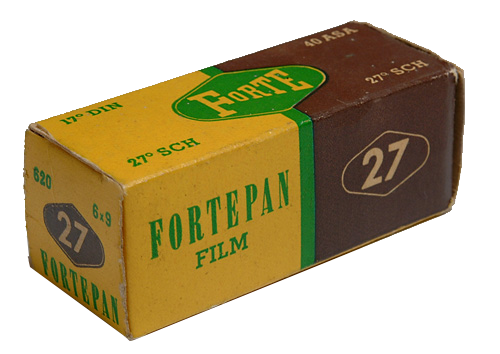About
Fortepan US is a networked cooperative portal that supports the preservation, sharing, viewing, and use of family and local historical photographs.
This “digital first” platform inspires cultural heritage institutions to rethink digital archiving practices by making local historical documents more accessible.
Our inspiration (and name) comes from the Fortepan project based in Budapest. Fortepan was established in 2010 and has since become a cultural institution throughout Hungary. The Hungarian team chose the name “Fortepan” to pay homage to the popular black-and-white negative Fortepan film sold throughout the world after World War II, which was produced by the Hungarian company FORTE (1948-2001).

Today, Fortepan is more of a concept for sharing and displaying photos for public use.
Drawing upon the power of place, the Fortepan US platform encourages family contributors and cultural heritage institutions within a single U.S. state or other entity (like an Indigenous territory or U.S. national park) to join digital forces and unite the historical photographs/cultural artifacts in their holdings through a single interface.
These place-based photos are also organized according to time: thousands of photos from the same state or territory, across multiple collections, are situated along a timeline so that all historical photographs are immediately contextualized alongside other photos from the same year. This gives users the feel of a collective family album that tells the visual story of that place. You can view the photos in chronological order in either timeline view or grid view.
Finally, Fortepan US is a powerful tool for grouping photographs by theme. We have a list of controlled category terms (like “children” and “farms”) that administrators apply to each photo in the archive to increase its findability by subject. Descriptive tags offer an even more detailed layer of thematic grouping, offering users a convenient entry point to photographs that resonate with their interests and experiences. The Fortepan US platform is built to encourage crowd-sourced tagging so everyone can share their expertise in describing a photograph’s content.
The Fortepan US cooperative platform increases accessibility, offers joyful exploration with more publicly useful and immersive experiences, and inspires ardent participation in the tagging and interpretation of the images shared publicly online. This creates a fundamentally different viewing experience than clicking around in segmented collections–more delightful, more diverse, more holistic, more grounded in the social history of the people.
Finally, we recognize the broad range of images that we have curated into this archive, including images that may be offensive or portray negative stereotypes. All images should be viewed in the context of their time periods. Fortepan US does not endorse the views represented in such images. However, we think these images are important for the overall conversation about who we are as Americans. They provide a fuller understanding and representation of different time periods in United States history. We hope you agree why they are there.
Our code
Fortepan US makes images available to the public using Kronofoto, the project’s open source code, which is available for download on Github and can be used for all sorts of different collection types..
All technology supporting the Fortepan US cooperative portal has been built exclusively with open source software, including the Linux operating system, Apache web server, PostgreSQL database server, Python programming language, and other open software and code. A vibrant collaborative dynamic has been fostered between the developer and operations teams, creating an ideal environment for new ideas.
Tools
Fortepan US features a suite of tools to engage the public in visual history and customize user experience.
- MyList allows researchers and creators to create customized lists of photos according to their own interests and needs. Lists are viewable in grid or timeline view, and can be saved for future reference, shared with others, and even embedded into a website.
- Embed allows community institutions to embed any version of a collection into their own website (for example, all the photos from their particular town) making images most relevant to their publics immediately available.
- Exhibit will empower users to curate a collection of images to easily generate digital stories that draw upon photos from the portal.
- Birdseye/360 will be an immersive visual geolocation tool that exactly and beautifully situates historic photographs in the modern landscape with an immersive degree of visual precision.
The platform also supports Traditional Knowledge labels through a partnership with Local Contexts.
We are making Fortepan US a national reality, building the platform so it can structurally accommodate any state, Indigenous territory, or national park, and exist on multiple servers for maximum platform sharing and administrative autonomy.
Support
Fortepan US is supported by the National Archives and Records Administration, National Endowment for Humanities, Humanities Iowa, CT Humanities, and the University of Northern Iowa.